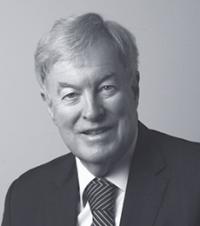Commissioner’s review, 2017–18
The Australian Public Service (APS) reached an interesting juncture in 2017–18.

Government and society are being disrupted and transformed. This presents significant opportunities and ramifications for the APS. The challenges associated with this dynamic environment have been evident throughout 2017–18.
The role of the Australian Public Service Commission (APSC) is impacted. I see this as beneficial because it makes our work more interesting. The APSC staff have been excellent in embracing the challenge to make a significant contribution to ensure the APS has a contemporary employment framework.
I turn now to some of the APSC highlights for 2017–18.
The APSC relocated from Woden to the Treasury Building in Parkes in August 2017. We benefit from the central location and the proximity to other central agencies. Staff also enjoy a more contemporary workspace and better interactive technology.
We piloted a service wide recruitment pathway for graduates with disability. The initiative called GradAccess placed 23 graduates. The first year success will be built on in coming years.
An Indigenous Mentoring Program created 152 partnerships across 44 agencies to support the retention and advancement of Aboriginal and Torres Strait Islander employees. This success guaranteed the launch of a second program in June 2018.
The 2018 APS employee census was completed by over 103,000 employees thereby achieving a response rate of 74 per cent. This result is most encouraging as it shows that APS employees are interested in their employment experience.
The APSC holds significant data about the APS. It follows that we have a continuing focus on improving data quality, accessibility, integration, and security. This means that more data is available online and we have introduced a fresh look and feel to many of our data publications. We acknowledge our responsibility to ensure the data is used to aid the management of the APS, to assist in identifying key workforce planning issues and to point to areas of attention.
An important initiative was the release of updated guidance on the use of social media and making public comment. It is important that such guidance is relevant and contemporary.
The APSC Centre for Leadership and Learning moved into new premises in the Treasury Building making it a state of the art learning centre. Obviously, the importance of digital capability amongst APS employees received considerable attention. The Centre, in collaboration with the Digital Transformation Agency, developed 13 learning design standards. The standards serve as architectural blueprints for what good training looks like. The standards will assist agencies to buy training from the market place.
The APS has a responsibility to develop and nurture its talented staff. The Centre for Leadership and Learning played an important role in the work of talent councils to bring through a leadership pipeline for the future.
The APSC continued its important work of international engagement with our neighbours. We partner with Indonesian civil service agencies and the Papua New Guinea Department of Personnel Management to explore avenues to address governance and public sector reform issues.
A new workplace bargaining policy was announced this year. The policy retains much of the previous policy. Salary increases averaging 2 per cent a year are available and the commitment to flexible enterprise arrangements continues.
My tenure as APS Commissioner comes to an end in August 2018.
I have found the job a fulfilling and rewarding experience. The APS is staffed by many talented and conscientious people who deliver the Government and the nation a very professional service. We at the APSC have continued the reform journey of striving for a modern employment framework. A framework that equips the APS to be efficient, effective and professional.
I am confident the APS is well positioned to meet its future challenges.
John Lloyd PSM
6 August 2018



